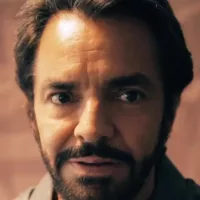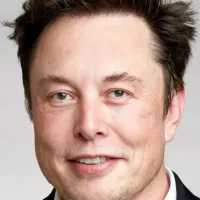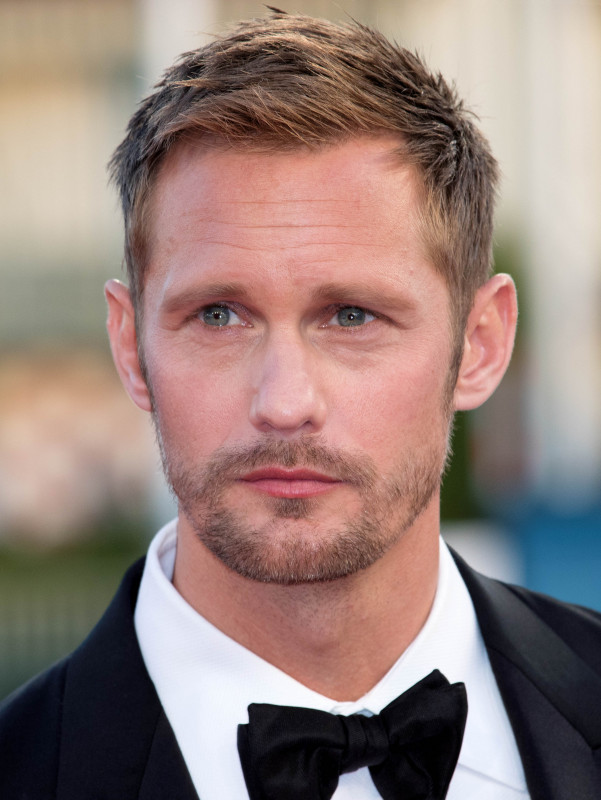Crimea is a peninsula located on the northern coast of the Black Sea, connected to mainland Ukraine by the Isthmus of Perekop and linked to Russia via the Crimean Bridge. It's bordered by the Black Sea and the Sea of Azov. With a population of 2.4 million, its largest city is Sevastopol. Crimea is internationally recognized as part of Ukraine but has been under Russian occupation since 2014.
1917: Short lived regimes after the Russian Revolution
Following the 1917 Russian Revolution, Crimea experienced many short lived regimes.
1917: October Revolution
In 1917, the October Revolution occurred, which transformed the Russian Empire into the Soviet Union, initiating a difficult period for minorities in Russia.
1918: Establishment of Taurida National University
In 1918, the Taurida National University was established by the Crimean Regional Government.
1921: Creation of the Crimean Autonomous Soviet Socialist Republic
In 1921, the Crimean Autonomous Soviet Socialist Republic was created as part of the Russian Soviet Federative Socialist Republic.
1921: Soviets replace Tavricheskaia oblast with Krym
Since 1921 the Soviets replaced Tavricheskaia oblast with Krym, depriving it of official status.
1925: Establishment of Artek camp
In 1925, Artek, a Young Pioneer camp, was established on the Black Sea in the town of Hurzuf.
1936: Start of the Great Purge
Between 1936 and 1938, during Joseph Stalin's Great Purge, many Italians were accused of espionage and were arrested, tortured, deported or executed.
1938: Continuation of the Great Purge
Between 1936 and 1938, during Joseph Stalin's Great Purge, many Italians were accused of espionage and were arrested, tortured, deported or executed.
1939: Population of Crimea Germans
In 1939, the number of Crimea Germans was 60,000.
1944: Deportation of Greeks, Bulgarians, and Italians
In 1944, Stalin deported 70,000 Greeks, 14,000 Crimean Bulgarians and 3,000 Italians of Crimea.
1944: Deportation of Crimean Tartars
In 1944, after the Soviets regained control of Crimea, they deported the Crimean Tartars and several other nationalities to elsewhere in the USSR.
1945: Crimea Downgraded to Oblast
In 1945, Crimea was downgraded to an oblast within the Russian SFSR.
1945: Dissolution of Autonomous Republic
In 1945, the autonomous republic was dissolved, and Crimea became an oblast of the Russian SFSR.
1954: Transfer to Ukrainian SSR
In 1954, Crimea was transferred to the Ukrainian SSR on the 300th anniversary of the Treaty of Pereyaslav.
1959: Founding of the Simferopol-Yalta trolleybus route
In 1959, the longest trolleybus route in the world, stretching from Simferopol to Yalta, was founded in Crimea.
1963: Name of Tavriya Simferopol football club
In 1963 the Tavriya Simferopol football club was named.
1969: Expansion of Artek camp
By 1969, Artek camp had an area of 3.2 km and consisted of 150 buildings.
1991: Decline of Artek's prestige
After the breaking up of the Young Pioneers in 1991 Artek's prestige declined, though it remained a popular vacation destination.
1991: Reorganization as Autonomous Republic of Crimea
In 1991, following Ukrainian independence, most of the Crimean peninsula was reorganized as the Autonomous Republic of Crimea.
1997: Treaty on Basing Russian Fleet
In 1997, a treaty allowed Russia to continue basing its fleet in Sevastopol.
2001: Ethnic makeup of Crimea
According to the 2001 Ukrainian population census, 60% of the population of Crimea are ethnic Russians and 24% are ethnic Ukrainians.
2001: Crimean Inhabitants language data
According to the 2001 census, 77% of Crimean inhabitants named Russian as their native language; 11.4% Crimean Tatar; and 10.1% Ukrainian.
2001: Ukrainian Census Data
In 2001, the Ukrainian Census reported the population of the Republic of Crimea and Sevastopol to be 2,376,000 (Autonomous Republic of Crimea: 2,033,700; Sevastopol: 342,451).
2001: Census of ethnic Germans
The 2001 Ukrainian census reports just 2,500 ethnic Germans (0.1% of population) in Crimea.
2010: Extension of Lease for Russian Fleet
In 2010, the lease for Russia to base its fleet in Sevastopol was extended.
2012: Record number of tourist arrivals
In 2012, the number of tourist arrivals reached a record of 6.1 million in Crimea.
2013: Crimea as a top travel destination
According to National Geographic, Crimea was among the top 20 travel destinations in 2013.
2013: Merchant Seaports in Crimea
As of 2013, according to the International Transport Workers' Federation, there were at least 12 operating merchant seaports in Crimea.
2013: Religious composition of Crimea
In 2013, Orthodox Christians made up 58% of the Crimean population, followed by Muslims (15%) and believers in God without religion (10%).
2013: Status of the Crimean Tatar Language
In 2013, the Crimean Tatar language was estimated to be on the brink of extinction, being taught in Crimea in only about 15 schools at that time.
2013: Tourist industry statistics in Crimea
In the first half of 2014 over the same period of 2013, the flow of holidaymakers dropped 35 percent in Crimea.
March 2014: Crimean Clubs Withdraw from Ukrainian Leagues
Following Crimea's vote to join Russia and subsequent annexation in March 2014, the top football clubs withdrew from the Ukrainian leagues. Some clubs registered to join the Russian leagues, but UEFA ruled that Crimean clubs could not join the Russian leagues but should instead be part of a Crimean league system.
December 2014: Visa and MasterCard stopped service in Crimea
In December 2014, Visa and MasterCard temporarily stopped service in Crimea due to sanctions imposed following Russia's annexation of Crimea.
2014: Russian census language data
According to the 2014 Russian census, 84% of Crimean inhabitants named Russian as their native language; 7.9% Crimean Tatar; 3.7% Tatar; and 3.3% Ukrainian.
2014: Tourist industry losses after the Russian annexation
After the Russian annexation of Crimea in 2014, the tourist industry suffered major losses. The flow of holidaymakers dropped 35 percent in the first half of 2014 over the same period of 2013.
2014: Ukrainian Orthodox Church After Russian Annexation
Following the 2014 Russian annexation of Crimea, 38 out of the 46 Ukrainian Orthodox Church – Kyiv Patriarchate parishes in Crimea ceased to exist; in three cases, churches were seized by the Russian authorities.
2014: Russian Annexation of Crimea
In 2014, Crimea experienced demonstrations against the removal of the Russia-leaning Ukrainian president Viktor Yanukovych and protests in support of Euromaidan. Russian forces occupied parliament and government buildings, and the Russian-organized Republic of Crimea declared independence following an illegal referendum. Russia then annexed Crimea, although most countries continued to recognize Crimea as part of Ukraine.
2014: Economic indicators of Crimea
In 2014, the republic's annual GDP was $4.3 billion, the average salary was $290 per month, and the budget deficit was $1.5 billion.
2014: Population of Crimea and Sevastopol
In 2014, the total population of the Republic of Crimea and Sevastopol was 2,248,400 people (Republic of Crimea: 1,889,485; Sevastopol: 395,000).
2014: Crimea Railway operation
Since 2014 the railways are operated by the Crimea Railway.
2014: Cisdneper Directorate of the Ukrainian Railways
Until 2014 the network was part of the Cisdneper Directorate of the Ukrainian Railways.
May 2015: Construction began on the Kerch Strait bridge
In May 2015, work began on a multibillion-dollar road-rail link (a pair of parallel bridges) across the Kerch Strait.
2015: Halting of tram line operation
In 2015, the operation of a 1.6 km tram line in Molochnoye was halted.
2016: Rebound of tourist arrivals in Crimea
By 2016, tourist arrivals in Crimea rebounded to 5.6 million after dropping to 3.8 million in 2014.
2016: Nominal GDP of Crimea
In 2016, Crimea had a Nominal GDP of US$7 billion and US$3,000 per capita.
2016: Jamala wins Eurovision
In 2016, Crimean Tatar singer Jamala won the Eurovision Song Contest representing Ukraine with her song "1944", about the historic deportation of Crimean Tatars in that year by Soviet authorities.
2017: Construction of the Tavrida federal highway
From 2017 the Tavrida federal highway was built under Russian occupation.
May 2018: Opening of the Crimean Bridge road section
In May 2018, the road bridge of the Kerch Strait crossing opened.
2018: Opening of the Crimean Bridge
In 2018 the new Crimean Bridge opened connecting Crimea to the Taman Peninsula.
2018: Crimean Bridge Construction
In 2018, the Crimean Bridge was constructed across the Strait of Kerch, linking Crimea with Krasnodar Krai in Russia.
December 2019: Opening of the Crimean Bridge rail section
In December 2019, the rail bridge of the Kerch Strait crossing opened.
August 2022: Zelenskyy calls for liberation of Crimea
In August 2022, Ukrainian president Volodymyr Zelenskyy stated that it was "necessary to liberate Crimea" from Russian occupation and to re-establish "world law and order".
October 8, 2022: Attack on the Crimean Bridge
On October 8, 2022, the Crimean Bridge was damaged by an attack.
2022: Restoration of Water Flow
After the 2022 Russian invasion, the flow of water through the North Crimea Canal was restored, however the destruction of the Kakhovka Dam could lead to problems with water supply again.
July 17, 2023: Attack on the Crimean Bridge
On July 17, 2023, the Crimean Bridge was attacked again.
Mentioned in this timeline
Ukraine is a large country in Eastern Europe second in...
The Union of Soviet Socialist Republics USSR existed from to...
Germany officially the Federal Republic of Germany is a Western...

Football is a family of team sports primarily involving kicking...
Russia officially the Russian Federation is a transcontinental country spanning...
Turkey officially the Republic of T rkiye is a transcontinental...
Trending
7 months ago Prague dethroned as best place to live; David Lynch exhibition opens at DOX.

Eugenio Derbez is a highly successful Mexican actor and comedian renowned for his work in both Spanish and English language...

2 months ago Angela Bassett As Queen Ramonda Stuns At Vogue World 2025; Black Panther Tribute.

8 months ago Tesla Board Initiated CEO Search to Replace Elon Musk Amidst Leadership Concerns.

9 months ago Milo Manheim and Liz Gillies bond in Little Shop of Horrors, extend run.

1 month ago Alexander Skarsgård reminds Miriam Margolyes of their meeting; addresses sexuality question, states 'not really' gay.
Popular

Stranger Things created by the Duffer Brothers is a popular...

XXXTentacion born Jahseh Dwayne Ricardo Onfroy was a controversial yet...

Kelsey Grammer is an accomplished American actor producer and singer...

Candace Owens is an American conservative political commentator and author...

Bernie Sanders is a prominent American politician currently serving as...

Melania Trump a Slovenian-American former model has served as First...